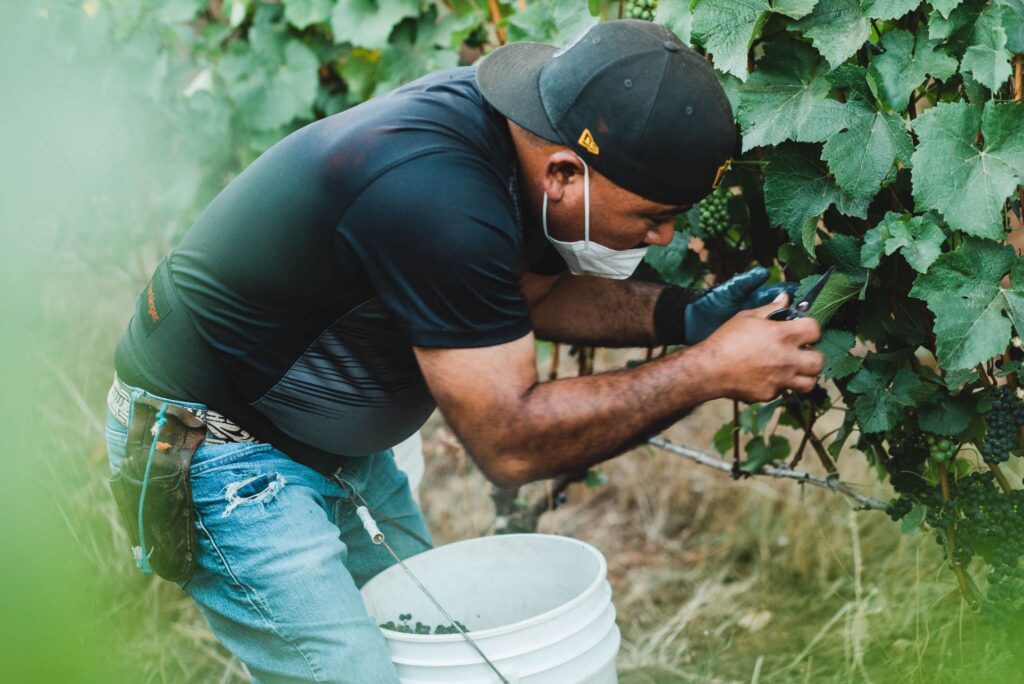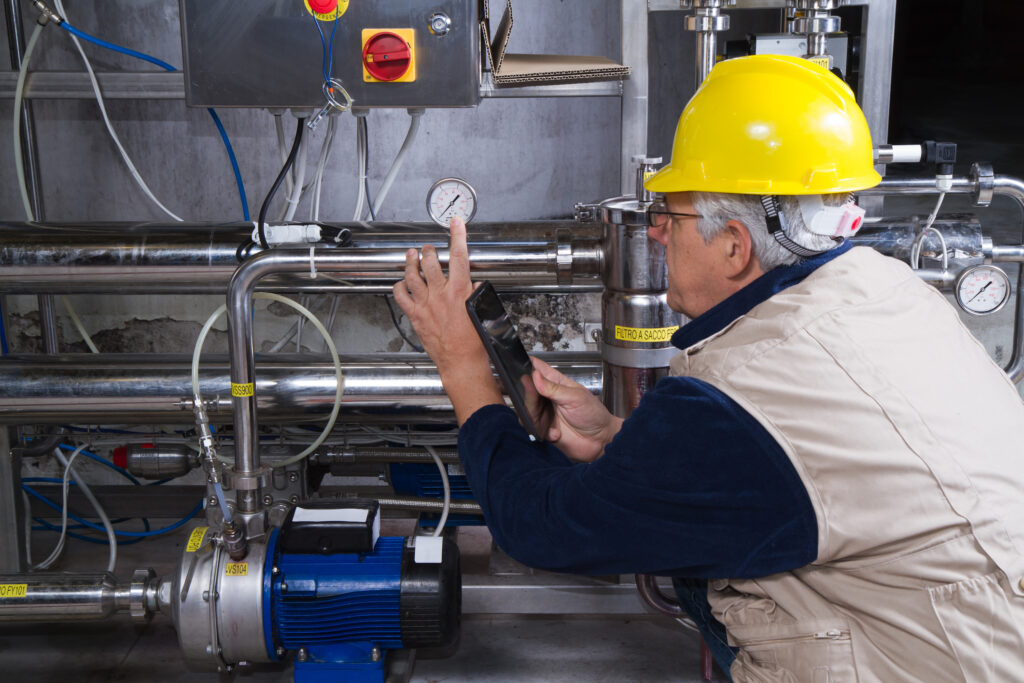
By: Tod Stewart
It’s more than a little ironic to learn that the first known “wine law” was distinctly anti-wine. In an effort to increase the food supply, Roman emperor Domitian (c. 92) issued a decree banning the planting of any more vines in Italy. The hope was that available growing land would be given to planting cereal grains as opposed to grapes. Guess how that all worked out. Though largely ignored throughout the country, it nonetheless stayed in effect for close to 200 years before being repealed by emperor Marcus Aurelius Probus (and much celebration ensued).
Wine laws enacted across Europe – starting with those conceived by the Reichstag in 1498 – were generally done for nobler purposes – typically to prevent wine fraud. Fakery became especially problematic in mid-19th century France as the phylloxera blight decimated vineyards and all but dried up the flow of wine. These laws evolved into the familiar (at least to wine buffs) Appellation d’Origine Contrôlée (AOC) system. Similar laws proliferated in wine growing regions around the world. They aimed at establishing geographical origin, permitted grape varieties and yields, and production methods, among other things.
Generally speaking, wine laws are a good thing for consumers. After all, if you’re spending big bucks on an Oakville Cabernet Sauvignon with the term “To Kalon” on the label (or considerably bigger bucks for a Pinot Noir identified as “La Tâche”), you’ll want some pretty solid guarantee that you are actually getting what you’re paying for.
For winemakers, some wine laws can present compliance challenges. I’ve talked to more than one European winemaker who almost envies the amount of freedom given to their American counterparts. Want to plant (more) Albariño in Lodi? No problem. Want to plant Albariño in Chianti Classico or Burgundy? Not so fast….One winemaker here in Ontario actually gave up his winery in Tuscany because he couldn’t deal with Italian bureaucracy. This is pretty stunning testimony given the bureaucracy level in Ontario.
Though still considered a “young” wine producing country, Canada today has a thriving wine industry situated largely in Ontario and British Columbia. Wine has been produced in this country for over 200 years, with the first commercial winery established in Ontario in 1866. However, it wasn’t until the 1970s, with the expanded planting of Vitis vinifera varieties and improved winemaking techniques that the emergence of a wine industry focused on high quality began to emerge.
The Vintners Quality Alliance Act,1999 designated VQA Ontario as Ontario’s wine authority on June 29, 2000. Broadly speaking, the mandate of VQA Ontario is to enforce the province’s appellation of origin system, control the use of specific terms, descriptions and designations, and set out mandatory winemaking practices pursuant to each specific VQA region and sub-region. Winemakers have some flexibility when it comes to grape varieties – so long as they are either Vitis vinifera or an approved hybrid (eg., Vidal), and there is no restriction as to what variety needs to be planted where.
There are the other usual checks and balances around things like brix levels at harvest for specific types of wines and the pedigree of fruit for particular regional designations (the requirements for a wine labeled as VQA Ontario will be more relaxed than for a wine identified as an Estate Grown Chardonnay with the designation VQA Beamsville Bench – a geographical sub-appellation). Labelling terminology is also regulated.
As with most wine laws – particularly those governing younger regions – evolution is largely unavoidable. When I contacted VQA Ontario headquarters to get a status update – and to ask how the pandemic had affected operations – I was somewhat surprised by the response.
“VQA Ontario has changed its operating name to the Ontario Wine Appellation Authority,” says Laurie Macdonald, the organization’s Executive Director. “When the pandemic began in March 2020, LCBO suspended all VQA tasting panels. The sensory evaluation has been conducted by the Appellation Authority using its own panelists since then and this will continue on a permanent basis.”
To backtrack a bit for perspective: for a wine to become VQA certified, it not only has to comply with labelling and packaging standards, and demonstrate geographic origin, it also has to pass laboratory and organoleptic testing. Up until the change Macdonald refers to, both of these functions were carried out by the Liquor Control Board of Ontario (LCBO), the province’s government-controlled beverage alcohol monopoly. This wan’t a bad thing. The LCBO lab is sophisticated and its technicians are, for the most part, top-notch. (Lab analysis is still carried out by LCBO.) The sensory evaluation panel consisted largely of LCBO product consultants – essentially LCBO retail store employees with superior product knowledge and, in the case of those on the tasting panel, proven knowledge of wine defects and various wine characteristics.
With the new changes, the panel roster is made up of qualified wine professionals, including sommeliers, winemakers, wine educators, WSET diploma and MW holders. Another change is that wines are no longer given scores (out of a possible 20 points, with 13 required for a passing grade). In the early days VQA actually had a two-tired scoring system. If memory serves me correctly, a score of over 13 counted as a pass and the wine could carry the VQA medallion on the bottle. Those scoring over 15 points could carry a gold VQA medallion. Whether or not I’m completely accurate on this point is more or less moot, as it was eliminated early on in the history of VQA.
The move away from any type of numerical scoring apparatus is likely a good thing, at least in the eyes of winemakers. In fact, some have grumbled (in varying levels of volume) that the tasting panel itself should be scrapped. The argument for this stance centres around the possible “subjectiveness” of the panel and the awarding higher scores to wines that are personally preferred as opposed to those which are technically sound. It also, perhaps in an indirect way, points to an issue with section (c) of the Act’s sensory guidelines that reads:
(c) To the extent that an applicant identifies a varietal designation in the application, such wine should exhibit the predominant character of a wine produced from the designated grape variety or varieties
Simply put, if you submit a Riesling to the panel for evaluation it should smell and taste like Riesling (and, of course, be defect-free – we’ll get back to that). Some winemakers will claim that this forces them to conform to some arbitrary “standard” that determines what the “predominant character” of a specific grape variety actually is. The “T word” – typicity – is often bandied about, along with the notion that striving for typicity limits innovation.
In fact, Niagara’s Pearl Morissette winery’s website contains this statement:
“We’ve all been blackballed. Some more than others. But whether it was not getting selected on the school soccer pitch or having the VQA repeatedly pass over your Niagara Riesling on the basis that it “lacked typicity”, getting blackballed has not always been a positive experience.”
The winery chose to celebrate this uniqueness with its Black Ball Wine Society, but you still can’t help but suspect there are some hard feelings behind the repeated rejection of its Riesling. Requests I made to have those at Pearl Morissette tell their side of the story were ignored. (To be fair, this isn’t the only winery that refused to answer my VQA-related questions, even with the promise of anonymity. In fact, not one of the over half-dozen wineries I approached chose to answer any of the question I asked.)
“It is important to note that ‘typicity’ is not mentioned anywhere in the VQA regulations or procedural documents,” Macdonald points out. “We do not prescribe any typical presentations of varietals for Ontario and aim to recruit tasters with global exposure to a wide range of styles. Innovation is welcome as it should be for a relatively young region. For example, we have seen oak-aged Rieslings which are certainly not typical but have been approved based on soundness. We do however confirm certain category requirements during the sensory testing, for example, sparkling wines must be carbonated, Icewines must be sweet. In my opinion this discussion is really about what is or is not perceived as an unacceptable flaw. Problems typically arise when the “style” is characterized by unacceptable levels of H2S, volatile acidity, brett, etc.”
To play devil’s advocate, I could counter that what is “unacceptable” to one taster may not be to another. One of my favourite wines, Lebanon’s Château Musar, wouldn’t be what it is without levels of VA and brettanomyces that may seem off the charts to some. In any case, the real question might be: “If VQA is all about geographic origin, why is there a tasting panel at all? Surely we’re not yet at the point where an Ontario wine’s origin can actually be confirmed by tasting it.” Well, the short answer is because, at this stage, an expert tasting panel is still necessary.
In my experience with (and I’ll come clean and say I’ve had some), the VQA/OWAA tasting panel offers winemakers something rather unique and, ultimately, helpful: the opportunity to have wines pre-screened by an objective panel (I should note that all wines are tasted blind – the tasters know the vintage, the varietal(s) if applicable, and style the wine is claiming to be…and that’s mostly it) before they get to the consumer. If there is a problem, the winemaker is informed and has the opportunity to correct it (assuming it can be) and resubmit the wine for re-evaluation.
While the VQA designation is not an indication to consumers that a wine is somehow superior to one without, it does pretty much guarantee its geographic lineage and that it’s defect-free. But shouldn’t winemakers be able to determine that their wines are of sound quality (like most places in the world) without some paternal body pointing out when the kid hasn’t lived up to expectations?
Macdonald reports that since 2000, failures have declined by10 per cent to a range of about two per cent over the past five years. She also notes that some failures are not the fault (or the sole fault) of the winemaker. Still, technical and microbiological issues make up the bulk of the reasons for failures.
“We facilitate ‘Winemakers Forums’ to encourage winemakers to share their experiences, challenges and best practices – suspended for COVID of course,” she informs. “This is intended to support ‘making the best wine possible’ given any set of parameters – vineyard, varietal, vintage conditions, price point, style, etc., and it necessarily includes preventing and managing faults.”
Given, ongoing training for winemakers at all levels is no doubt part of the key to producing high-quality, defect-free wines, the other major component is regular, ongoing tasting – and not only of a winemaker’s own wines. I was surprised many years ago as I toured Niagara wineries to hear how few of the local winemakers actually tasted wines of their competition – both international ones and those made by the winery across the street. Some winemakers, at times, seemed to have gotten so familiar with their own “style” that they failed to realize that this “style” included some obvious technical defects. In any case, regular and varied tasting is probably the most enjoyable “homework” most could think of engaging in.
As Ontario’s (and Canada’s) vinous landscape continues to broaden, the Vintners Quality Alliance Act,1999 will no doubt continue to be modified to reflect changes within the industry. Macdonald points out that since 2000, there have been a total of 35 changes to the regulations, adding grape varieties, raising minimum brix, allowing new closures, and so on. The last change, made in 2017, was the addition of the “skin-fermented white” category. This sort of flexibility ensures that innovation and creativity can thrive, with the Act lending a degree of guidance to winemakers, while ensuring geographical authenticity and, ultimately, consumer confidence and international respect.









